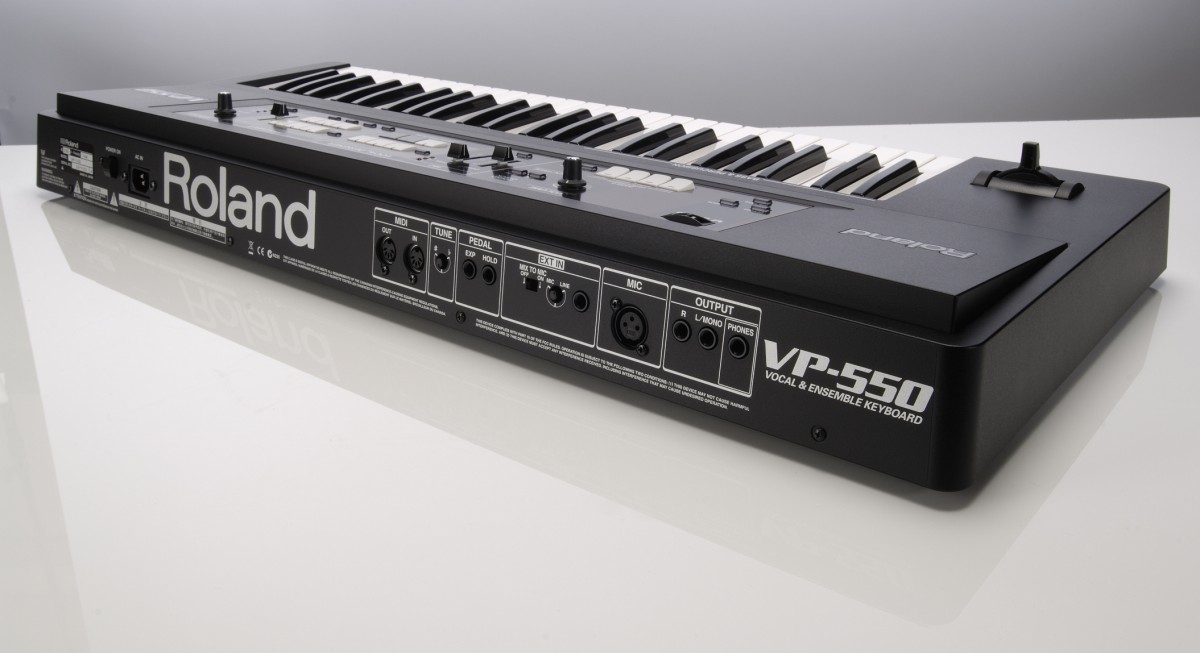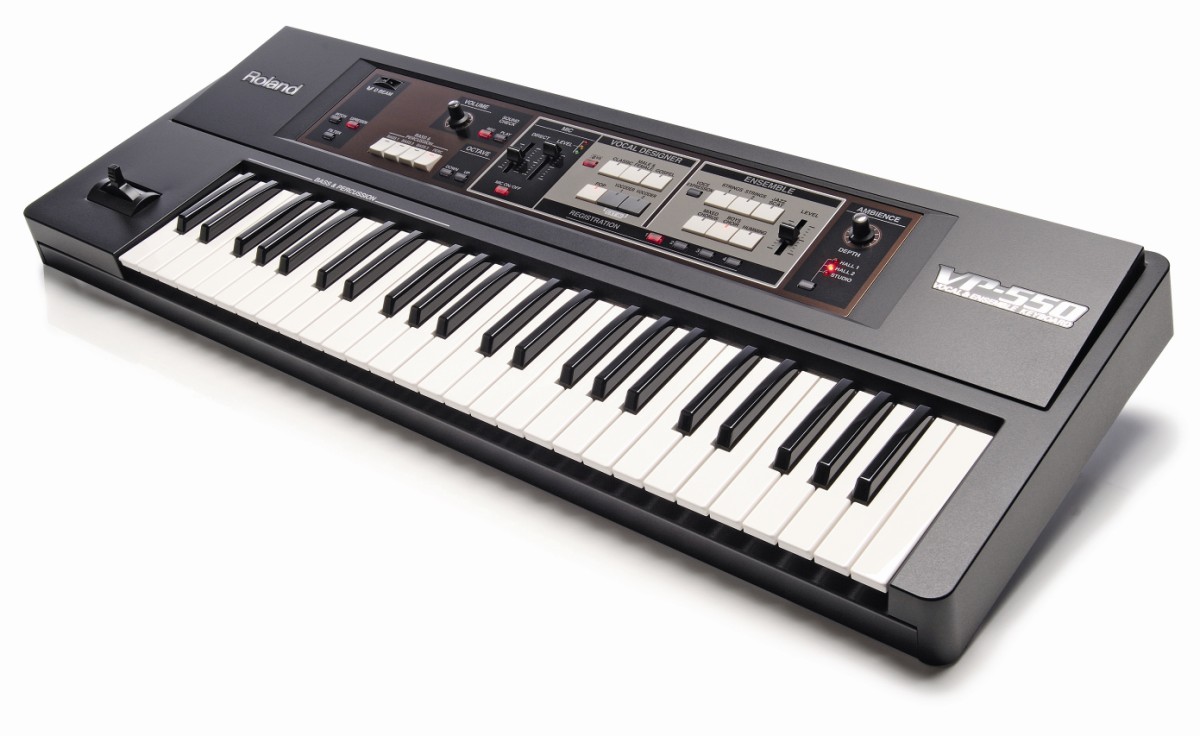MusicRadar Verdict
An ideal partner for live use but still a distinctive and useful sound source for any project.
Pros
- +
Believable results within a mix. Great for live work. Easy to use buttons.
Cons
- -
Sounds synthetic in isolation. More sophisticated tools exist for studio work.
MusicRadar's got your back


Could you imagine an easier-to-use, more instant interface than this? Buttons with a single function, big red LEDs, Fisher Price-style faders… Look, it hasn't even got a screen!
Roland's VP-550 is the sequel to the classic VP-330, introduced in 1979 and a legend not only for its vocoding skills but also for its Mellotron-like strings and choir. And, like the VP-330, the VP-550's talents are split into distinct sections, the overall presence of the machine coming from skilful use of its multiple tone generators.
At the heart of the machine is the Vocal Designer section dedicated to synthesizing vocals based on whatever you sing, hum or speak into it with six distinct tones to choose from. Thanks to the level and direct sliders you can run your vocal through the VP and out to your desk, then - with the press of a chord - as if from nowhere it produces a multi-part harmony based on your vocal. Release, and you're solo again.
Realistic vocals
So how does it sound? Well, the accent here is on recreating realistic vocals rather than any mad FX, and the 550 pulls this off brilliantly. While the VP-330 created a 'warm noise' that approximated to singing (and became a sought after sound in itself) the 550 now uses Roland's VC2 Vocal Designer V-Synth modelling to create much more believable results.
In fact, in the mix of a track, the Pop or Classic setting will give a bed of vocals that you'd be hard pushed to detect as fake. In isolation though, the VP's work is 'clever', but 'synthetic'. That said, just like the 330 before it, the 550 makes a pleasing, distinctive sound that you can really find a use for.
The Vocoder 1 and 2 settings are a pair of robo-voices and sound cool on fast monophonic riffs, giving talkbox-style results. Despite singing through bass to falsetto, the output of the VP remained rigidly locked to whatever keys were pressed however we tried to trick it. You'd assume that actually singing the notes you were playing would help the VP along a bit, but in practice we got the same excellent results whether we went for the note or not.
Ensemble
Alongside the vocal processing is the Ensemble section. Again, just six settings here but the strings and chorus sounds are just the sort of Rock staples that will fill out a track. And when combined with the Vocal Designer section you'll make a powerful sound from the weediest of singing. Special mention to the Voice Expression button that swells the Ensemble section alongside your vocal giving much less artificial, 'keyboard-played' results.
The package is rounded off nicely with a D-Beam controller (for pitch, expression and filter changes), a short recorder section for checking your sound without having to sing, and an effects zone with three reverbs. In the studio there are more sophisticated pitch correcting, harmonising and pad-playing tools but and for ease of use and live work there's a real place for the 550 in any rock act's arsenal.
MusicRadar is the number 1 website for music makers of all kinds, be they guitarists, drummers, keyboard players, djs or producers...
GEAR: We help musicians find the best gear with top-ranking gear round-ups and high- quality, authoritative reviews by a wide team of highly experienced experts.
TIPS: We also provide tuition, from bite-sized tips to advanced work-outs and guidance from recognised musicians and stars.
STARS: We talk to musicians and stars about their creative processes, and the nuts and bolts of their gear and technique. We give fans an insight into the actual craft of music making that no other music website can.
“Chinese Democracy was a boring record. But calling it Guns N' Roses was not honest. It was totally a solo record”: GN’R’s ex manager takes aim at Axl Rose
“Instead of labouring over a perfect recreation, we decided to make an expanded counterpart”: Chase Bliss teams up with Mike Piera for Analog Man collab based on the legendary King Of Tone
“It’s about delivering the most in-demand mods straight from the factory”: Fender hot-rods itself as the Player II Modified Series rolls out the upgrades – and it got IDLES to demo them










